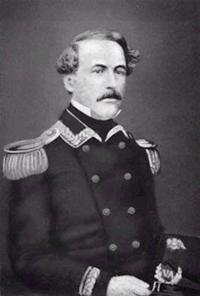One of Edgar Allan Poe’s most hair-raising tales is The Premature Burial, in which Poe relates a story of a young wife of a prominent member of Congress, who is incorrectly pronounced dead. The lady’s funeral took place three days later, at which time the young woman’s coffin was deposited inside the family vault. A few years later, when the vault was opened to receive another coffin, the woman’s husband was horrified when a shrouded skeleton collapsed into his arms. Examination disclosed that his wife had revived after burial, and her intense struggle to escape from her coffin caused it to fall from the shelf were it had been placed and break open. Violently shaking and banging the door of the vault, her shroud became entangled with the top arch of the door. There she hung suspended, until she eventually died.
In the 1800s, when this story takes place, the chance of being buried alive was not so remote. The state of medical knowledge at the time — some doctors didn’t have medical degrees — could easily lead to an erroneous verdict of "death" simply because attending physicians were unable to detect breath, pulse or heartbeat. Also, the possibility of being buried alive was heightened because modern embalming techniques were not used. In fact, many people were so afraid of being buried alive, they had special coffins constructed with elaborate apparatuses including bells that protruded above the grave and could be rung by a device inside the coffin. Indeed, the fear of being buried alive was so prevalent that it earned a medical classification: Taphophobia
Edgar Allan Poe set his story in Baltimore, Maryland, in the year 1844. But, because of striking similarities, it is probably based on a widely reported incident that took place in Stratford, Virginia, 40 years earlier. The Stratford premature burial also involved the young wife of a famous member of Congress.
 Ann Hill Carter was a refined young woman from one of the wealthiest and oldest families in Virginia. She spent her girlhood at the famous Shirley Plantation on the James River, which the Hills’ and Carters’ had inhabited since the 1600s, shortly after the establishment of the Jamestown Colony. During Ann’s childhood, most, if not all, of the Virginia signatories to the Declaration of Independence had been guests at Shirley Plantation.
Ann Hill Carter was a refined young woman from one of the wealthiest and oldest families in Virginia. She spent her girlhood at the famous Shirley Plantation on the James River, which the Hills’ and Carters’ had inhabited since the 1600s, shortly after the establishment of the Jamestown Colony. During Ann’s childhood, most, if not all, of the Virginia signatories to the Declaration of Independence had been guests at Shirley Plantation.
But Ann did not enjoy good health, and even harbored fears of becoming an invalid; fears that eventually were realized. She is reported to have suffered from narcolepsy, a sleep disorder that was little understood at the time. Victims of this disease experience frequent daytime sleepiness and sometimes fall into "sleep paralysis." An extreme attack of sleep paralysis, a deep trance-like state, could cause the cessation of normal reflexes and sensations.
Ann Hill Carter was only 20 years old in 1793 when she married the celebrated Henry Lee III, then Governor of Virginia and soon to become a member of Congress. Lee’s skilled horsemanship had earned him the nickname "Lighthorse Harry" and he was esteemed for his combat heroics in the Revolutionary War where he served under General George Washington. Seventeen years Ann’s senior, Henry was a widower with three children by his first wife who died in 1790. With her marriage, Ann became mistress of Stratford Hall and during the first decade of her marriage to Henry, she bore him four children.
Still, Ann continued to be plagued with poor health, and in 1804 she was taken with a severe fever — possibly dengue fever, and bedridden for months. One day, while in the grip of her illness, the family became alarmed that Ann was not responding to external stimuli. They hastily summoned physicians who conducted lengthy examinations of Ann’s inert body. Finally, the grim-faced physicians were forced to advise her husband that they could not detect a heartbeat. The grief-stricken husband reluctantly accepted the verdict of death and Ann’s body was placed in a coffin. Three days later, the coffin was put to rest in the family vault.
Some time later a sexton, bringing flowers for the deceased wife, thought he heard a noise emanating from the casket. As he listened intently, he was sure that he heard a faint voice calling for help. The sexton quickly unfastened and removed the lid from the coffin and Ann Carter Lee looked up at him with wide eyes as she tried to raise herself into a sitting position.
Over the next several months Ann Carter Lee slowly regained her health. Eventually she was able to become a fully functioning wife and mother. On January 19, 1807, fifteen months after her narrow escape from premature burial, she gave birth to a son who would be her last child to survive into maturity. The infant was named Robert Edward after Ann’s two brothers. Robert Edward was to become another illustrious member of the famous Lee family.
 When Robert was only eleven years old, ill-health and soured financial deals forced his father to abandon the United States and he never again returned to his Virginia home. By necessity, Robert became his mother’s helpmate. Most of the traits that we admire in Robert E. Lee; his deep religious beliefs and sense of duty, were imparted to him by his well-bred, fervently devout mother.
When Robert was only eleven years old, ill-health and soured financial deals forced his father to abandon the United States and he never again returned to his Virginia home. By necessity, Robert became his mother’s helpmate. Most of the traits that we admire in Robert E. Lee; his deep religious beliefs and sense of duty, were imparted to him by his well-bred, fervently devout mother.
As his mother’s health declined, Robert’s role as her caretaker expanded. To the end of his mother’s life, including long years as an invalid, Robert faithfully cared for her. When Ann died, she was buried at Ravenswood but years later her remains were relocated to the Lee Crypt at Washington and Lee University. There she rests alongside her husband and her son.
Some historians are skeptical about the premature burial of Ann Carter Lee, claiming that if it had occurred, they would have discovered a reference to it in the Lee family correspondence. But the story originated with members of the Lee family. And, in 1934, almost 130 years after the event, the details were printed in The Washington Post.
Although this is the kind of incident that arouses skepticism, Ann Carter Lee’s weakened physical condition, her narcolepsy and possible bouts of sleep paralysis could easily have caused an incorrect diagnosis of death considering the state of the practice of medicine in the 1800s. Even today there are countless reported cases of people who have been pronounced dead but, before an autopsy or embalmment, revive and sit up on hospital beds and mortuary tables.
Science has also attested to the ability of yogis and other "holy men" in India to achieve states of suspended animation, exhibiting the medical criteria for death while still alive. In such deep trances, all signs of life, including the digestive process, are arrested. In the interest of science, some of these holy men have agreed to be buried alive and, when exhumed a few days later, have been revived. Physical examinations indicated that all body functions are able to perform normally.
In the introduction to his collection of essays on this phenomenon by psychologists, "Experimental Hypnosis," Leslie M. Le Cron states: "Spontaneous states such as this have been reported from time to time. During the last century many people had great fear of being buried alive under the circumstances. One of the most famous cases of such burial, where the woman was rescued, was that of the mother of Robert E. Lee. In our time little is heard of this, perhaps because the methods of our morticians preclude burial while alive!"
The deep trance explanation of Ann Carter Lee’s premature burial is accepted because any alternative explanation would involve the miraculous and that would raise the hackles of those who scoff at anything that defies scientific explanation. However, history is strewn with inscrutable events that border on the miraculous. And a recent survey of physicians; the profession that deals most acutely with life and death, found that 74% believe in miracles. In fact, many physicians claimed to have witnessed treatment results and death bed recoveries that could only be described as miracles.
So, what are we to make of the resurrection of Ann Carter Lee? Was it simply a Lee family legend? Or was it a case of a misdiagnosis of death resulting from the imperfect state of medical knowledge at the time? — Or was it the result of some phenomenon beyond ordinary human comprehension?




